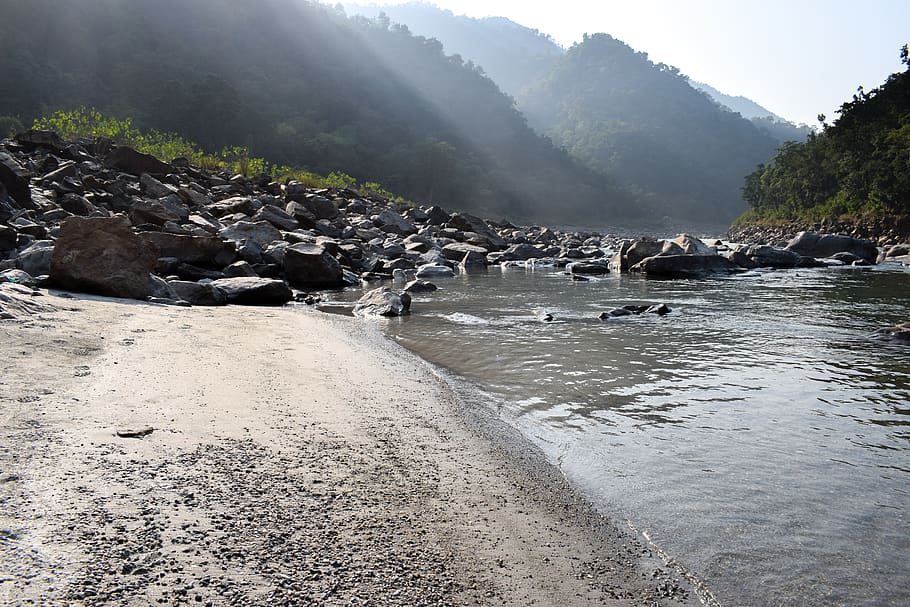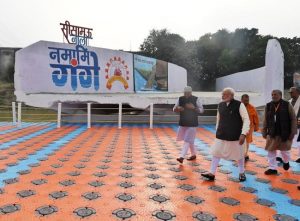
COVID-19 did what govt couldn’t to Indian rivers: Mission Clean-up

After successive governments failed to clean the severely-polluted Ganga river, the extension of the nationwide lockdown has achieved what crores of rupees of budget allocations and central projects like ‘Namami Gange’ couldn’t.
On Monday (April 27), the Central Pollution Control Board (CPCB) said the water in Ganga had become cleaner due to the COVID-19 lockdown and could now support aquatic life. The national board, however, said the river water was still not fit for drinking unless treated chemically.
The quality of water in the Ganga has improved as several factories and industries in Uttarakhand and Uttar Pradesh are shut amid the lockdown, the Hindustan Times reported.
River Development and Water Resource Management at Banaras Hindu University, which collected water samples on March 24, before the lockdown was imposed, and on April 20, amid the lockdown, said they had found a 30 per cent decrease in pollution levels.
Reasons for decrease in pollution levels
- 35-40 per cent decrease in biochemical oxygen demand (BOD) and 20-30 per cent increase in the dissolved oxygen (DO) level in samples, which means the water quality of entire river stretch from Uttarakhand to West Bengal has attained bathing standard
- Cremation of bodies along the banks is one of the main reasons for Ganga’s pollution. But now, amid lockdown, there has been a 40% decrease in the number of bodies cremated at Manikarnika Ghat and Harishchandra Ghat, HT reported
- At Varanasi, discharge of pollutants from more than 1,000 small-scale and cottage industries has considerably reduced
Water quality has improved due to reduced anthropological pressures on the Ganga, but this will be very difficult to maintain once the lockdown ends, said BD Joshi, an environmental scientist, as quoted by HT.
The parameters to asses pollution level in rivers are:
- Dissolved oxygen (more than 6 mg/litre)
- Biochemical oxygen demand (less than 2 mg/litre),
- Total coliform levels (5000 per 100 ml)
- pH (range between 6.5 and 8.5) to assess the health of the river.
Related news | In shutdown, Cauvery breathes life; shows dispute has little to do with river
Cauvery, tributaries cleaner too
According to the Karnataka State Pollution Control Board (KSPCB), the Cauvery and tributaries like Kabini, Hemavati, Shimsha, and Lakshmanathirtha have become cleaner due to COVID-19 lockdown.
As reported by The Federal earlier, elderly people on the banks of the river in Karnataka say they have not seen the river in this clear form in several decades. With industrial units shut due to the shutdown and effluents not flowing into the river, the Cauvery is cleaner again.
UPA, NDA govts’ failed attempts
Attempt to clean Ganga has been on since 1986 when the then government launched the Ganga Action Plan I. According to reports over ₹4,800 crore was spent on cleaning the river till 2014. Efforts by the government did not stop here. The Modi government which came to power in 2014, launched the Namami Gange project — its flagship programme to clean the Ganga, with a budget outlay of ₹20,000 crore to accomplish the twin objectives of effective abatement of pollution, conservation and rejuvenation of National River Ganga.
Despite this, the government’s efforts may have failed because they could not strike at the roots — shutting down industries or reducing pollutant emission into the rivers — which the COVID-19 lockdown has done.
Related news | How rivers, lands and lives are lost for in-demand sand in Tamil Nadu

